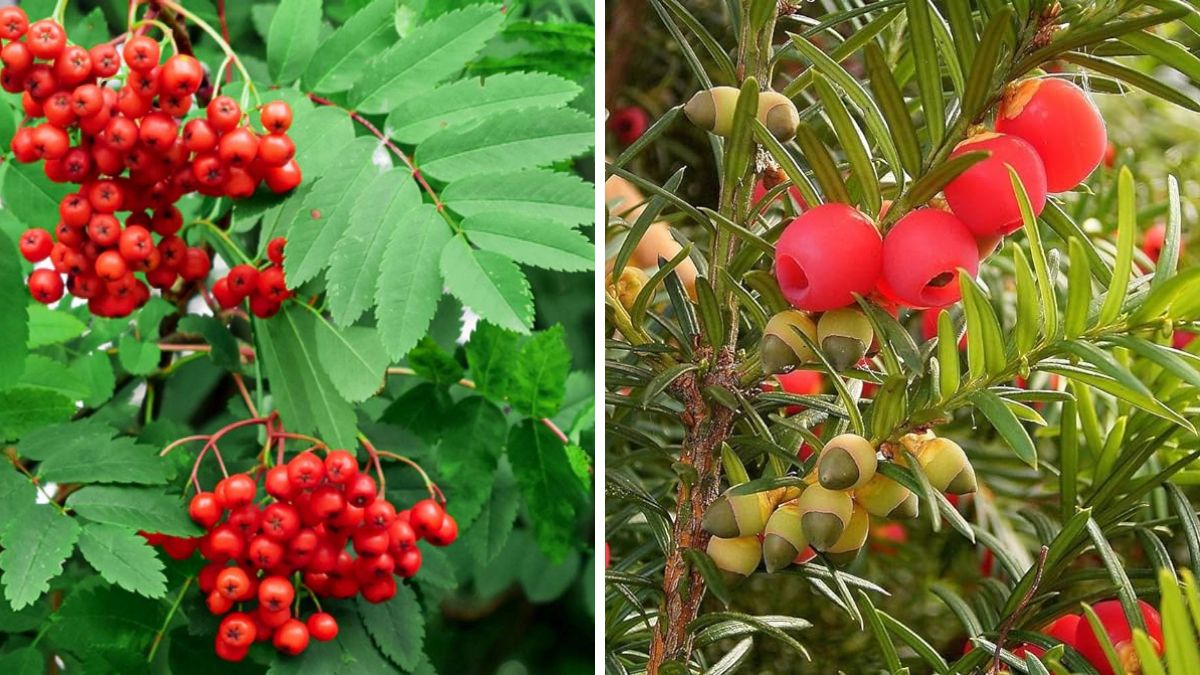Both ash tree and yew tree have aesthetic qualities but share many differences to decorate your garden.
If you want to learn more about the difference between an ash tree and a yew tree, read this article completely.
Table of Contents Show
Ash Tree Vs Yew Tree (Striking Differences)
Though Ash trees and yew trees are found in the Northern Hemisphere, they share differences in appearance and other qualities. Let’s check individually.

1. Appearance (Leaves, Fruits, Height, Lifespan)
Ash trees are deciduous with pinnate, with multiple leaves arranged along a central stem. They produce 10-12 inches long and 5-7 pairs of leaflets in oval or lanceolate shape.
When the fall approaches, green leaves turn into yellow or purple leaves.
These trees grow 100 feet tall with small, greenish-yellow flowers and clusters of winged seeds called “samaras” in the spring.
Surprisingly, ash trees can live for more than 300 years.
However, yew trees are evergreen with dark green needle-like leaves that grow throughout the year. These leaves are arranged spirally with branches to offer a dense canopy.
Trees develop reddish-brown blossoms in the spring to yield arils (red fruits).
Yew trees grow 50 feet tall (shorter than ash trees) and have a lifespan of over 1000 years.
2. Nativeness
Ash trees are native to regions including Europe, Asia, and North America. They best grow in forests, woodlands, and hedgerows.
Yew trees have the same native regions, but they are found in shady, damp habitats, including forests and ravines.
3. Wood & Uses
Ash trees are attractive and easy to use with hand and power tools. They are strong, hard, and elastic wood.
With that, they are used for crafting tools, furniture, sports equipment (baseball bats, hockey sticks, and oars), flooring, and cabinetry.
However, yew trees are hard, dense, and slow-growing wood. They are used for crafting furniture, musical instruments, bows, arrows, etc.
4. Toxicity
Ash trees are safe for humans, animals, and birds. In fact, most of the parts of ash trees are edible.
In contrast, yew trees are toxic and poisonous to people and pets as they possess large amounts of taxine, a toxic alkaloid in parts except the red part of the berry.
5. Cultural Significance
Ash trees are supposed to be the “World Tree” Yggdrasil to connect several realms of existence. Also, trees’ leaves are believed to be the source of protection and healing.
Besides, Ash trees were considered magical powers and used to craft wands and staffs.
However, due to their toxic nature, yew trees have meanings related to mortality and immortality.
These trees are grown in churchyards and cemeteries across Europe, where people believe that trees protect the souls of the deceased and guide them to the afterlife.
Also, the yew trees were sacred to the goddess Hecate.
From Editorial Team
Which one to grow?
You can get ash trees as taller, faster-growing trees and own attractive summer foliage.
If you want long-lasting, evergreen trees that grow in various climates, you can grow yew trees.


